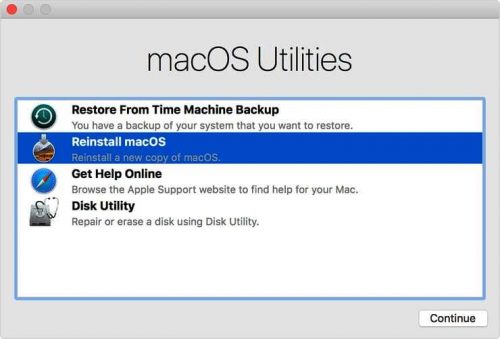
- #Reinstall mac os x lion 10.7 install
- #Reinstall mac os x lion 10.7 full
- #Reinstall mac os x lion 10.7 pro
- #Reinstall mac os x lion 10.7 software
#Reinstall mac os x lion 10.7 pro
Mac Pro (Mid 2010) | 10.14.6 with recommended Metal-capable graphics cards. 
Mac Pro (Mid 2012)* | 10.14.6 with recommended Metal-capable graphics cards.
#Reinstall mac os x lion 10.7 full
See the Technical Specifications for the full list of requirements.
#Reinstall mac os x lion 10.7 software
The latest supported software version is noted next to each model.
#Reinstall mac os x lion 10.7 install
You can install Mac OS X Lion on any of these Macs.
 Mac OS X Snow Leopard 10.6.6 or later or Mac OS X Lion 10.7 already installed. Disadvantages: requires an internet connection and new enough firmware since everything is coming over the internet, booting will be slower than with your own recovery drive (and again, reinstalling Lion will require 4GB worth of patience).Mac OS X Lion 10.7 is available for older systems that are not compatible with the latest version of macOS. Advantages: doesn't require any advance preparation as above, you can boot from this and recover from Time Machine and/or reinstall Lion (if you have enough time). Use Lion Internet Recovery (per BJ Homer's answer). Disadvantages: you must create this before removing the old HD, it requires an 1GB or larger flash drive, and since it won't include the full Lion installer you'll need an internet connection (and 4GB worth of patience) to reinstall Lion with it. Advantages: you can boot from this and recover from Time Machine (and/or reinstall Lion if you have an internet connection and enough time). Create a Lion Recovery drive (per my answer above) using an existing Lion system and Apple's Lion Recovery Disk Assistant. Disadvantages: you need to download the installer first (around 4GB), and it requires an 8GB or larger flash drive. Advantages: just like the purchased installer, you can boot from this and reinstall Lion and/or recover from Time Machine without needing an internet connection. Create your own Lion installer drive (per Diago's answer) using a downloaded Lion installer app. Advantages: you can boot from this and reinstall Lion and/or recover from Time Machine without needing an internet connection.
Mac OS X Snow Leopard 10.6.6 or later or Mac OS X Lion 10.7 already installed. Disadvantages: requires an internet connection and new enough firmware since everything is coming over the internet, booting will be slower than with your own recovery drive (and again, reinstalling Lion will require 4GB worth of patience).Mac OS X Lion 10.7 is available for older systems that are not compatible with the latest version of macOS. Advantages: doesn't require any advance preparation as above, you can boot from this and recover from Time Machine and/or reinstall Lion (if you have enough time). Use Lion Internet Recovery (per BJ Homer's answer). Disadvantages: you must create this before removing the old HD, it requires an 1GB or larger flash drive, and since it won't include the full Lion installer you'll need an internet connection (and 4GB worth of patience) to reinstall Lion with it. Advantages: you can boot from this and recover from Time Machine (and/or reinstall Lion if you have an internet connection and enough time). Create a Lion Recovery drive (per my answer above) using an existing Lion system and Apple's Lion Recovery Disk Assistant. Disadvantages: you need to download the installer first (around 4GB), and it requires an 8GB or larger flash drive. Advantages: just like the purchased installer, you can boot from this and reinstall Lion and/or recover from Time Machine without needing an internet connection. Create your own Lion installer drive (per Diago's answer) using a downloaded Lion installer app. Advantages: you can boot from this and reinstall Lion and/or recover from Time Machine without needing an internet connection. 
Buy a Lion installer (USB drive) from Apple.

There are a number of similar options that can be a little confusing, so here's an attempt at clarifying their differences: Then, after you replace the HD, you can boot from that and use it to reinstall Lion and/or recover your system from Time Machine. I'll add yet another option to the list: before you remove the old HD, use the Lion Recovery Disk Assistant to copy its recovery partition to a flash drive.








 0 kommentar(er)
0 kommentar(er)
